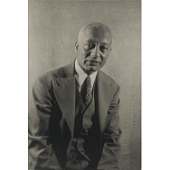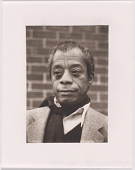

Photo Credit: Rikamwatanabe.com
Francette Carson
On September 10, 2019, Jeremy O Harris made history as the youngest African American playwright to hit Broadway with the debut of “Slave Play,” a fresh, bold, fearless, cutting edge, relatable story about sexuality and racism. He has written and exquisite production that pushes queer sexuality and racial boundaries. Three couples are attending a marital retreat, and they travel back and forth between the slavery era and modern times. The characters portray three interracial marriages one same-sex male couple and two heterosexual couples; a Hispanic/Black male, Black female/White male and, a Black male/White female. The platform explores racial and sexual boundaries in a story of forbidden love. The highs and lows of the intense relations within their marriages resonate as a universal humanistic experience. This fierce and amazing production takes one on an emotional journey of feelings of anger, confusion, frustration, curiosity, and enlightenment. The audience is left to sit with these array of emotions long after the curtains have closed.
The world we know now and the world we knew is talking about this play. It has united three prominent intellectual thinkers from the past and present generations to discuss the implications of racism, sexual identity, power, and control. An open forum discussion was held at City College of New York featuring Alain LeRoy Locke, James Baldwin, and Hilton Als.
Alain LeRoy Locke, a writer, philosopher, educator, and patron of the arts. Locke led the Harlem Renaissance. He is the author of The New Negro(1925). This highly acclaimed book focused on the philosophical idea of black equality. He was a critic of the arts, publicist, and agent to many influential leaders and artists of his time.
James Baldwin, an essayist, playwright, novelist, and activist. Baldwin was one of the influential voices of the Civil Rights Movement. He is the author of Go Tell It on the Mountain(1953), Giovanni’s Room(1955) and, Just Above My Head(1978), which are depictions of homosexuality. His essays, Notes of a Native Son(1955), Nobody Knows My Name(1961), explore racial, sexual, and class distinctions. These essays established him as one of the greatest writers of his time.
Hilton Als, a Pulitzer Prize-winning essayist, author, art curator, educator and lead theatre critic for the New York Times. He is the author of The Women(1996), and White Girls(2013), a book of essays on race. Als provocative and distinguished contributions on theatre, race, class, sexuality are shifting the landscape of the identity in America.
Hilton Als, a Pulitzer Prize-winning essayist, and author. Als is the lead theatre critic for the New York Times, art curator, and Professor of writing at Columbia University. He is the author of The Women(1996), and White Girls(2013), both a book of essays on race. His provocative and distinguished contributions in theatre, race, class, sexuality are shifting the landscape of identity in America.
COMMENTATOR
Question 1: The grand sense of triumphalism is explored in the play. There is a struggle between addressing issues within interracial, and same-sex marriages and a domineering female to male relationship. Does O’Hara effectively implement a balance between the issues of homosexuality, race, sex, and oppression?
ALAIN LeROY LOCKE

The controversial tale profoundly touches the soul through riveting performances and brutally honest, authentic dialogue. There are hard truths revealed which leaves the future uncertain. There could never be a balance between homosexuality, race, and sex, as these are conflicting positions within our society. The Black race have been humiliated by the acts of those choosing to oppress them. There is disdain shown for those who chose to love someone of the same gender or outside of their race. The oppressor may discriminate against one if they expose the personal intricacies of their intimate relations. Therefore, no one triumphs in this production.
Photo Credit: National Portrait Gallery, Smithsonian Institution
The community must understand there is little difference biologically between the race of people. The culture distinguishes the contrast between Blacks and Whites, and as a result, racism evolves. My philosophical ideology reflects cultural pluralism when people of different backgrounds respect one another and are able to live amongst each other. We must learn to value people’s origin without bolting them to their past. We must keep our dignity no matter our sexual preference. It is a personal choice and should not be a topic of discussion for any other than oneself. The radical views and expressions of anger and desolation demonstrate a lack of discipline and order. I gave my heart to my race and left my desires to be where they were. The characters in this play are weaved together, stirring emotions and evoking feelings of anguish. The performances were intense, the audience became active participants in the production. The emotional devastation prompted an intellectual curiosity of the isms (racism, sexism, elitism) in society. The symbolic contrast between time impacted my ideology while influencing my current biases.
The playwright’s lapse of sentimental appeal prompts the need for the development of positive self-respect and self-reliance. The hypersensitiveness portrayed in the play demonstrates social dependence. We have come far, and one can choose to marry whom they love despite their gender. African Americans are free to choose their destiny. In this modern era, there needs to be a gradual recovery from the oppression caused by slavery, and the bias imposed on same-sex relationships.
COMMENTATOR
Question 2: The masculinity and emasculation of men are examined in all three relationships. The power struggle in these relationships is magnified through sexual relations. Sex is at the forefront, and slavery sits on the side, waiting for the opportunity to surface. Is Broadway ready to receive a production of this magnitude? Does O Harris push the boundaries too far with the display of these overt sexual scenes?
JAMES BALDWIN

Jeremy O Harris has created an illusion and if Broadway is not ready. They better get ready. The vicious cycle of power and control, male/female dominance, victimization, and the silence surrounding oppression within non-traditional relationships are core issues explored in this play. Harris created a production that explores generations of dysfunctional thought patterns amid three diverse marriages. Harris puts viewers in a position to analyze and assess the dynamics of their relationships from various points of view.
Photo Credit: National Portrait Gallery, Smithsonian Institution
Harris exposes disturbing stereotypes of the “Big Black Buck,” and the “Voluptuous Black Woman” which arises the sexual desires of their White partners. The righteous White man professes his wife to be his beautiful Black queen in the present time. In the era of slavery, she reverts to an overly sexualized negress he uses to satisfy his sexual appetite. The power of control between the interracial couple comprised of the White female and her biracial husband displayed their underlying fantasies. The sexual acts used to emasculate him reinforces the White superiority complex within their relationship as well as highlights his desire to be submissive and possible exploration of bi-sexual relations. The Black and Hispanic gay male couple address the unsettling dynamics of power and control due to colorism. The Hispanic male is a person of color; however he can pass for White whenever it’s to his benefit. He presents himself as the prize in the relationship because of his lighter skin tone and his ability to exercise the White privilege. The Black male struggles with the imbalance of power in their marriage. He exerts his manhood with the use of violence and oppression. He takes control of his partner in a domineering act during a sexual encounter.
The couples are placed in comprising situations in which the audience is led to believe they can take control of their romantic destiny. These scenes suck the air out of the room, leaving the spectators in shock. The sex scenes are burdened with overtones of violence and oppression while simultaneously filled with passion and desire. Harris pushed boundaries far enough to put a grip hold on his audience, and this is the way theater should be, intense, realistic, and gripping. Harris has taken hold of past issues we fought and has set the tone for the next generation. The thought-provoking statements, domineering characters, and vivid presentation of emotions force people to recognize racism, oppression, and the imbalances of power within these relationships.
COMMENTATOR
Question 3: The historical oppression of blacks and discrimination against persons in interracial and same-sex relationships are long-standing controversial issues. Can the current generation offer solutions to these perplexed problems through a therapeutic couples retreat?
HILTON ALS

The” White Girl” always takes to the couch to get her life together. The patronizing over-exaggeration of the therapist is wearisome and lessens the intensity of the narrative and weighs down the emotional impact. This play has a sensibility impacting three marginalized groups Blacks, gays, and women.
Photo Credit: Ali Smith
The historical oppression of Blacks is often consumed by affluent White people. As evidenced by, the occupants of the seats at a production titled ” Slave Play” filled to capacity with the White upper-middle class. Harris has bravely addressed the predominately White audience of mixed sexual orientation with a forceful hand-delivering a message of the backhanded, condescending exertion of power. Harris strangles their psyche while destroying the ideology of their control.
The gimmicky sex scenes were for shock factor, prompting some patrons to exit the theatre. Still, I don’t believe the impact was more lasting than the melodramatic drama in the dialogue. The opening act takes place on a plantation in Virginia. The stark contrast of the musical selection, R&B singer Rihanna’s song “Work” for this scene, screeches controversy. Are the lyrics referring to the metaphorical significance of working on the plantation or the intended sexual connotations in dance and music of today?
The play was brilliant; it explored and demonstrated the overarching theme of poetic suffrage. Racism is used as the power of manipulation and control in the interracial and same-sex marriages. The performances were powerful, enlightening, and deeply emotional. Harris takes you on a journey traveling below the surface and digging into deep-rooted issues that are often left untapped.
COMMENTATOR
In conclusion, the voice and spirit of Locke and Baldwin’s wisdom and their legacies are compelling. They have had a massive influence on our ideas and philosophy of today. Our past leaders led remarkable lives, and their spirits resonate with us today. Our world became a better place because of their contributions. The struggles remain, and influential intellectuals such as Als continue to lead the way towards a better day. Art is propaganda, and Jeremy O Harris has created “Slave Play” a masterpiece that will entertain, inspire, enlighten, and have a significant influence on a new generation.

